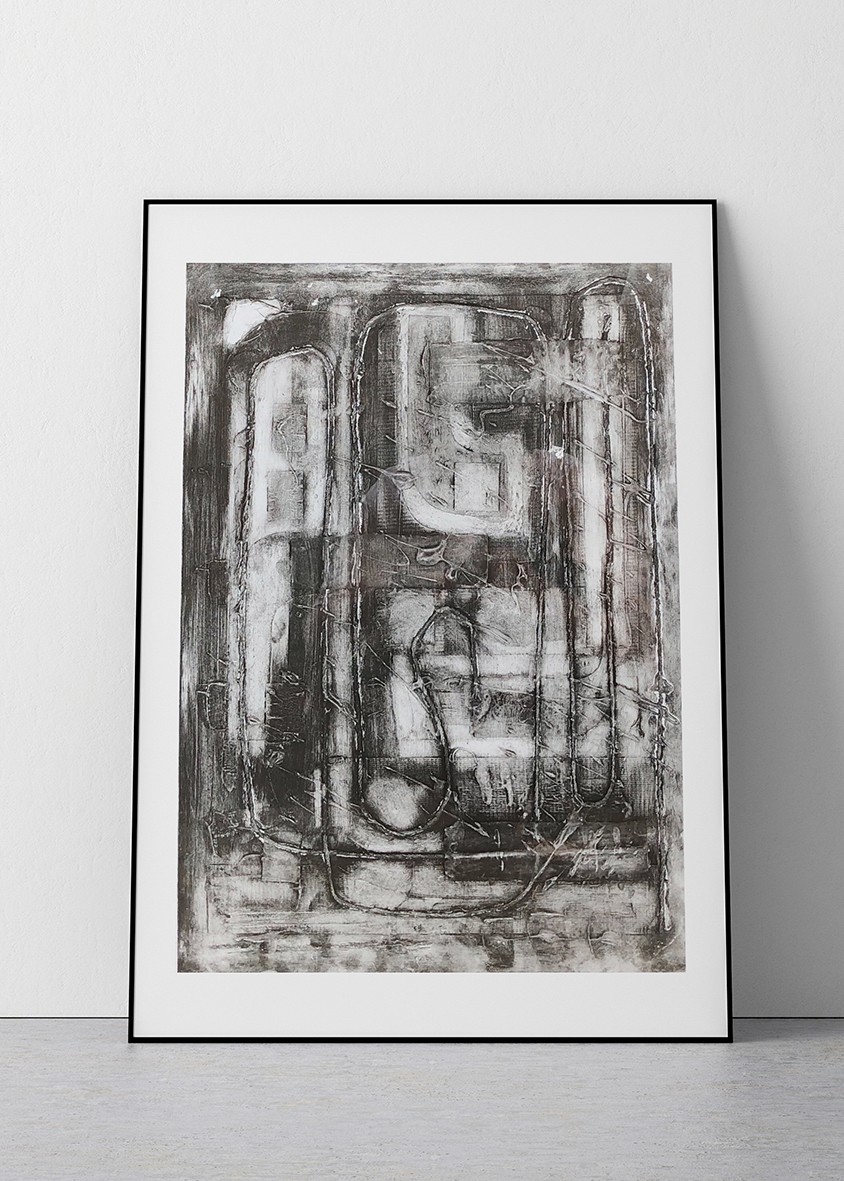‘With a background in design, practicing a range of processes, from photography to traditional print, Luke’s work studies composition of shape, pattern and texture. Inspired by everyday scenery and the forms surrounding him, his work is a personal dissection of these elements, creating contemporary and often abstract imagery. Luke’s experimental and hands on approach to image making, results in chaotic and often surreal outcomes.’

How does your photography relate to your print practice?
It’s just another means of creating imagery to me. When I’m not in the studio, I take photographs. I guess working with composition through photography links with my artwork, how I align and combine shapes through a lens is similar to the way I combine shapes and textures in my more abstract works. I do try to use my own photographs when producing photo collages.
What observations interest you about city life?
I feel like city life has influenced me a lot throughout the past, mainly subconsciously before more recent years. I’ve always loved being in a busy environment, that has made me want to constantly produce and do more in general. One conscious interest is definitely architecture, I find myself studying shapes within buildings in the city, the patterns within widow structure or just the colossal and overwhelming forms that architecture brings. Architecture is a very powerful art form, often overlooked or just totally in its own sub genre, I’ve always loved it (or hated it). It’s a shame to see less creative structures arising across our cities today.

How have you developed your techniques of image making?
The way I work has always been quite experimental, I never really know the outcomes of my work before they’re completed and in front of me. I went to university to study Design, where I spent most of my time in the print room, avoiding the refinements of studying a subject and instead learning and experimenting a lot with print techniques. Aside from that, I’m constantly developing, I’ve been doing a lot of painting in my own studio lately, that’s been fun because it’s something I’ve done very little of before now, so I’ve developed my techniques a huge amount over a short period of time.
What qualities are you looking for when experimenting with textures in print?
I can’t say I’m looking for anything in particular with textures, I just work with whatever appeals to me or what would contrast best with what is already within the work. Having said that, I have definitely created textures intentionally, utilising textured objects within etchings or collagraphs or any other mono type prints. I always build textures with powders and strings, or anything I can find with a nice texture at that time.
What do you enjoy about different print processes and how do you merge these disciplines?
I love the time taken to print traditionally and the unpredictable side to it. In a digital age where everything can be printed perfectly crisp on a choice of paper and finish in a matter of seconds, I guess you can’t help but admire the dedication and effort that goes into manual print techniques. I’ve always liked crafting things personally, which becomes apparent within my work. I’d much rather spend a day preparing and printing my own work than have someone in a digital print shop produce very flat and uninteresting versions quickly. I guess I like the element of controlling my outcomes, opposed to having a computer or another person do this for me. I also love the surface that all print processes can produce, when inks overlap to create new colours and when texture is built onto existing layers or embossed into paper. The patience and artistry required to finish an artwork is amazing too, anything that has taken time and skill to create becomes instantly valuable to me.